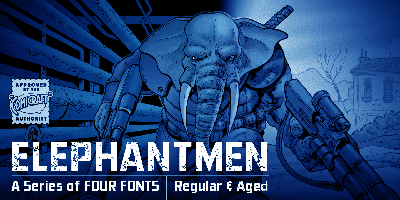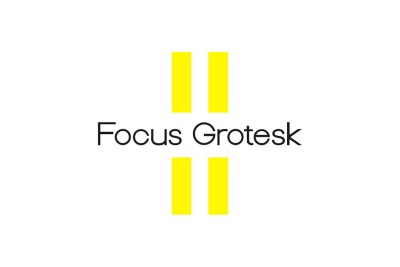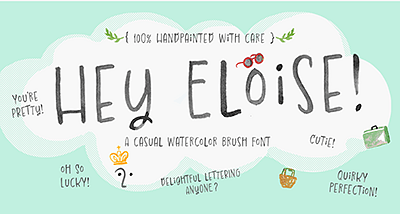5 Key Tips to Consider When Choosing Free Fonts for Your Design
5 Key Tips to Consider When Choosing Free Fonts for Your Design
Typography is one of the most crucial elements in any design. Whether you’re crafting a website, creating a logo, or designing a poster, the font you choose can make or break your work. In today’s digital landscape, there’s no shortage of free fonts available online. From Google Fonts to independent foundries, designers have access to thousands of typefaces without spending a dime.
But here’s the catch: just because a font is free doesn’t mean it’s the right choice. Selecting the perfect typeface requires a keen eye and a little strategic thinking. To help you out, we’ve put together five essential tips for choosing free fonts that not only look great but also elevate your design.
Consider the Tone and Personality of the Font
Fonts speak louder than words—literally. Each typeface carries a distinct mood and personality. A whimsical handwritten font might be perfect for a wedding invitation but feel totally out of place on a corporate finance site.
Before falling for a font’s style, ask yourself:
Does this font reflect the tone of my brand or project?
For instance:
-
Serif fonts (like Times New Roman or Playfair Display) often feel traditional, formal, or elegant.
-
Sans-serif fonts (like Open Sans or Montserrat) usually come across as modern, clean, and straightforward.
-
Script fonts (like Pacifico or Great Vibes) convey elegance, creativity, or a personal touch.
-
Display fonts are bold and attention-grabbing but can be overwhelming in large amounts of text.
Pro tip: Pick fonts that align with your message. If your design is for a tech startup, go for clean, geometric sans-serifs. For a vintage café menu? A retro-inspired serif might hit the spot.
Check for Legibility at All Sizes
Sure, that font may look stunning on a hero image, but how does it hold up in a paragraph? Or worse, in mobile view?
A common mistake is choosing a font that looks stylish in a logo but becomes unreadable in body text. Free fonts, especially decorative ones, can sometimes lack the refinement of premium typefaces when it comes to clarity.
Here’s what to check:
-
Readability at small sizes
-
Letter spacing (kerning) and line height
-
Similar letterforms (is that an “l” or a capital “I”?)
Pro tip: Always test your font choices in real scenarios—headlines, body copy, buttons, etc.—and on multiple devices. Your users (and their eyeballs) will thank you.
Make Sure the Font Has the Right Character Set
It’s easy to fall in love with a font’s style and forget to check the basics—like whether it even includes the characters you need.
Here’s a checklist:
-
Does it support special characters (like é, ñ, or ü)?
-
Does it include punctuation and numbers?
-
Does it offer different weights (light, regular, bold, etc.)?
Pro tip: If you’re designing for a global audience or a multilingual site, make sure the font supports extended character sets or multiple languages. Some free fonts skimp on these extras.
Pay Attention to Licensing
Free doesn’t always mean free-for-everything.
Fonts come with licenses, and while many free fonts allow both personal and commercial use, some are more restrictive. You don’t want to find yourself on the receiving end of a legal email because you used a font in a client’s logo without checking the terms.
Types of licenses to look out for:
-
Personal use only: Free to use on your own projects, but not for anything commercial.
-
Commercial use allowed: You can use the font in client work, marketing, merchandise, etc.
-
Open-source licenses (like SIL Open Font License): These typically allow wide usage and even modification.
Pro tip: Always read the license file or the font's webpage. When in doubt, reach out to the creator or choose fonts from reputable sources like Google Fonts or Fontshare.
Limit Your Font Palette
With so many free fonts at your fingertips, it’s tempting to go wild and use a different font for every element on your page. But unless you're designing a circus poster, this is a fast track to chaos.
A solid rule of thumb? Stick to two or three fonts max.
Here’s a winning combo formula:
-
One font for headlines
-
One for body text
-
Optional: one accent or decorative font for special elements
If you’re not confident pairing fonts, look for typeface families with multiple styles (like bold, italic, thin) or use free tools like Google Fonts' pairings suggestions.
Pro tip: Consistency builds trust. A tight, thoughtful font palette keeps your design clean, professional, and cohesive.
Wrapping It Up
Fonts may seem like a small detail, but they carry immense weight in your design’s overall impact. Choosing the right free font isn’t just about aesthetics—it’s about function, clarity, and brand alignment. By keeping these five tips in mind, you’ll not only avoid common mistakes but also bring your projects to life with style and purpose.
Remember: The best fonts don’t scream for attention—they quietly support the message. Choose wisely, test thoroughly, and let your typography do the talking.




